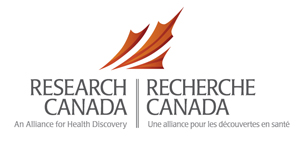 As the director of the Ottawa Institute of Systems Biology at uOttawa and as past-president of the Canadian Society for Molecular Biosciences, I get a lot of emails asking me to attend or help advertise science conferences.
As the director of the Ottawa Institute of Systems Biology at uOttawa and as past-president of the Canadian Society for Molecular Biosciences, I get a lot of emails asking me to attend or help advertise science conferences.
Most of these emails end up in my delete file.
Why? I am no longer going to promote, sponsor or attend meetings that do not have a significant number of female speakers.
If accomplished female scientists are not asked to present at meetings, by default it suggests their research is not as exciting or as good as that of their male colleagues.
This matters both financially and professionally – your speaking portfolio contributes to the success of grant applications and whether one receives tenure or becomes a full professor.
Canada needs equity in science, technology, engineering and mathematics (STEM). As Imogen Coe, dean of science at Ryerson University and a leading expert in the barriers of women in STEMs, states, “If we are to solve or even address the complex problems that we face, we need all hands on deck, we need everyone at the table, we need to leverage all the human potential and intellectual capacity that is available to us.”
With women comprising more than 50 per cent of trainees and early-career researchers in biomedical fields, how is it that that the problem of #YAMMM (yet another mostly-male meeting) still exists?
The answer is this: Scientists let it happen.
Consider how science conferences are run. For a number of reasons, largely mid- or late-career scientists organize meetings, and they are often men. Only established researchers, who are no longer struggling to build their research programs, build new courses or possibly to raise young families, have the time to organize meetings.
It’s only human that when they solicit speakers, it’s colleagues they know, or want to collaborate with. If you are an early-career researcher, especially female, many meeting organizers might not have you on their radar.
This will change when organizers of meetings – including scientific societies and funders – start demanding that equity is a fundamental requirement of meetings.
Coe recently challenged me to ensure that the speakers at our 2017 Canadian Society for Molecular Biosciences meeting reflected our attendees. I am both proud and ashamed to announce that at our 60th annual science meeting, 50 per cent of our speakers were female.
I insisted that our organizers seek out exceptional female speakers to give plenary talks.
While this was embraced by many of my colleagues, it was strongly resisted by others. Some refused to even consider equity issues when selecting speakers. Why? One often-made excuse is that there are no excellent females in a field to invite.
Jodi Nunnari, president-elect of the American Society for Cell Biology, calls this “a poor excuse, which justifies the same old status quo.” To counter this argument, her society established a speaker referral list to identify outstanding women scientists across the field of cell biology.
Here’s what happened at our meeting. Many back-handed comments were made about how “different” the speaker lineup was. I got upset emails over not being asked to give a talk. One said, “I guess I didn’t tick-off the right boxes.”
These reactions consistently originated from mid- and late-career male scientists.
However, for every negative comment, I received tenfold more positive comments from across the research spectrum, from trainees to retired professors, both male and female.
While I am hopeful that our government will one day tackle the equity issues in STEM by directly tying it to funding, scientists cannot just wait. As individuals and as institutions we have the ability to literally change the face of conferences – and success – in Canadian science.
Let’s commit to ending the #YAMMM.
Kristin Baetz is the director of the Ottawa Institute of Systems Biology and professor at uOttawa.
This article was originally published on August 29, 2017 by Kristin Baetz, The Ottawa Citizen
